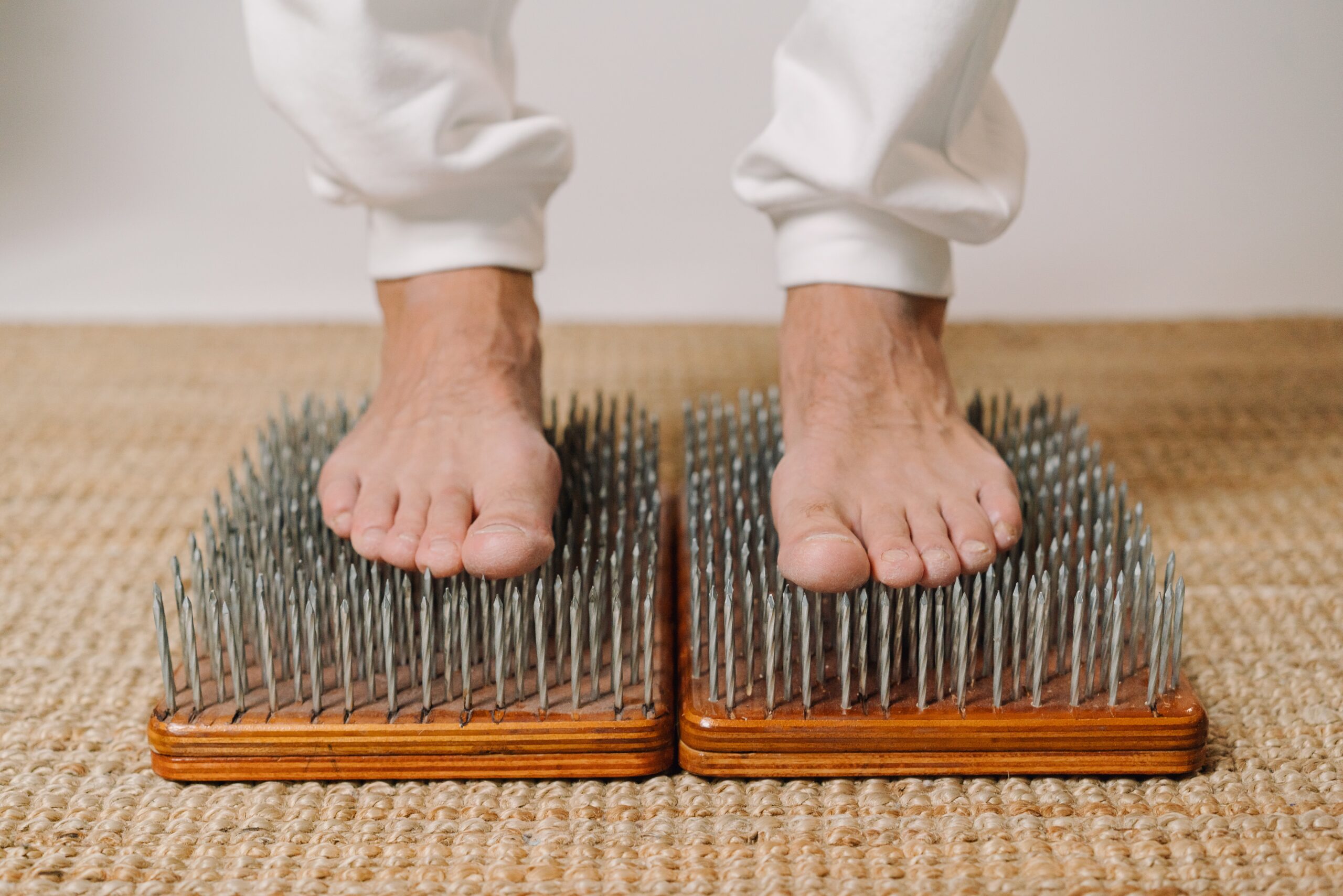
If we want to feel consistently healthy and happy we must stay physically active. All of our bodily processes, from immune function to cognition, depend on our cardiorespiratory and musculoskeletal systems’ (i.e. movement of the heart, lungs, body, and vasculature) ability to constantly pump out waste, and shuttle resources around. Constant is the key word.
Now this metaphor might be a little extra, but for argument’s sake I want to paint the picture. Here’s what’s happening to you if you’re currently engaged in an “exercise” routine (and by the way, here’s a mind-bending article you might enjoy on why “exercise” ain’t good for ya):


I’ll admit that the analogy was exaggerated, but the point is that if you want to feel as crisp as a raging river throughout the entire day rather than a puddle of diseased Ebola water, you should aim to microdose your movement throughout the day.
Does this mean you should quit your day job to become a wandering movement hobo? Certainly not. Hell, I’m not even advocating for you to move around more than you already do (although that would be fantastic!)

What I am advocating is for you to consider taking your daily allotted time for physical activity, and breaking it up into chunks instead of getting it all done in one strenuous workout.
Now I know what you’re thinking – yes, getting your “exercise” routine done in one 75-minute bout is still better than what the average North American might be doing (but also, the average is fucking horrifying so stop comparing yourself to it)…
Even so, let me show you why it’s extremely important if not downright imperative that we spread our movement throughout the day:
It’s better for fat loss. When we move more consistently (e.g. three short sessions per day versus one long session) we are constantly tapping into our aerobic energy system which is responsible for burning fat1. Constantly stimulating the aerobic system throughout the day to provide fuel for movement turns us into fat burning machines2!
It optimizes hormonal profile. There are many stress hormones that help to mobilize resources (e.g. fat and glucose) in the body to create energy. Of those, cortisol is one of the most useful but due to the dysfunctional nature of modern-day living we humans are oftentimes red-lining our bodies’ production of cortisol, leading to metabolic dysregulation and mental/emotional stress3. The key then, is to temper our training sessions to release less cortisol and more feel-good energy-producing hormones by chunking our daily movement into shorter and more manageable bouts4. By moving consistently throughout the day, we dose ourselves with a steady drip of “good” stress hormones like epinephrine, norepinephrine, dopamine, acetylcholine, and serotonin. The resulting improvements in mood and cognitive performance are akin to microdosing actual drugs, except this time you’re getting high off your own supply!

Moving consistently throughout the day and avoiding the maniacal gym-rat style of balls-to-the-wall training protects immune function5. In a nutshell, consistent bouts of low-to-moderate intensity exercise improves immunity while high-intensity long-duration exercise may weaken immunity for those who are already chronically stressed6, 7. If there was ever a time to train for optimal immune function, now would be that time!
Constant physical activity and movement makes us better able to focus and learn due to the release of brain-derived neurotrophic factor (BDNF). BDNF promotes neurogenesis – the brain cell growth necessary to make new connections, learn new material, and slow the natural aging process later in life8. At first, constant motion might seem like a chore, but over time it will become your new norm as you experience for yourself the positive changes in cognition and decision-making as it relates to your work and relationships!
It’s how we were meant to move! Experts like Dr. Daniel Lieberman from Harvard or Dr. Robert Sapolsky from Stanford both assert that from an evolutionary perspective, humans are designed to move all day everyday at low to moderate intensities (a far cry from the desk-bound and technology-addicted society many of us are trapped in). Yes, there’s a time and a place for long-duration, high intensity training, but consistent easy movement throughout the day is without a doubt the path to optimal health and wellness.

To be clear, there’s absolutely a time and place for long-duration training sessions. If you’re an athlete there’s no getting around the fact that to elicit certain physiological adaptations (e.g. hypertrophy, power endurance) you’ll have to push through long, grueling training sessions. But in the context of simply trying to feel happy and energized throughout the day, shorter sessions spread throughout the day is where it’s at!
So with all that being said, for your convenience here’s a sample day of physical activity, spread into three 25-minute sessions, with each session based on the three broad categories of training that I, as well as my clients, focus on in order to be complete athletes well-rounded human beings.
Sample day of physical activity:
- 7:30am, before you’re off to work: Elevate heart rate and ventilation for 25+ minutes. Examples include walking, running, biking… any activity that makes your heart beat faster and your breathing rate increase.
- 12pm, lunch break: Move heavy stuff around for 25+ minutes. Examples include calisthenics, powerlifting, kettlebell training… any activity that requires you to exert yourself against an external load (which might even include your body X gravity, as in calisthenics training).
- 6pm, post-work shenanigans with the homies: Fun, playful activity that emphasizes the ABCs of athleticism (agility, balance, coordination) for 25+ minutes. Examples include kickboxing, dancing, skateboarding… any activity that might be considered a sport or recreational physical activity.
Give it an honest go for 2-3 weeks and I guarantee you’ll feel better! You might even accidentally get hooked to living a more physically active lifestyle because of it ;).
And as always, if you need further guidance on how to feel and perform at your best, you’re more than welcome to reach out!
Pat Koo
BKin, CSCS
Further reading:
- Willis, L.H., Slentz, C.A., Bateman, L.A., Shields, A.T., Piner, L.W., Bales, C.W., Houmard, J.A., & Kraus, W.E. (1985). Effects of aerobic and/or resistance training on body mass and fat mass in overweight or obese adults. Journal of Applied Physiology, 113(12), 1831-1837.
- Levine, J.A. (2002). Non-exercise activity thermogenesis (NEAT). Best Practices and Research in Clinical Endocrinology and Metabolism, 16(4), 679-702.
- Skoluda, N., Dettenborn, L., Stalder, T., & Kirschbaum, C. (2012). Elevated cortisol concentrations in endurance athletes. Psychoneuroimmunology, 37(5), 611-617.
- Hill, E.E., Zack, E., Battaglini, C., Viru, M., Viru, A., & Hackney, A.C. (2008). Exercise and circulating cortisol levels: The intensity threshold effect. Journal of Endocrinology Investigation, 31(7), 587-591.
- Walsh, N.P. (2018) Recommendations to maintain immune health in athletes. European Journal of Sport Science, 18(6), 820-831.
- Nieman, D. C. (2009). Immune function responses to ultramarathon race competition. Med Sportiva,13(4), 189-196.
- Moreira, A., Delgado, L., Moreira, P., & Haahtela, T. (2009). Does exercise increase the risk of upper respiratory tract infections? British Medical Bulletin, 90, 111-131.
- Szuhany, K.L., Bugatti, M., & Otto, M.W. (2016). A meta-analytic review of the effects of exercise on brain-derived neurotrophic factor. Journal of Psychiatric Research, 60, 56-64.



